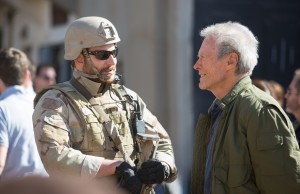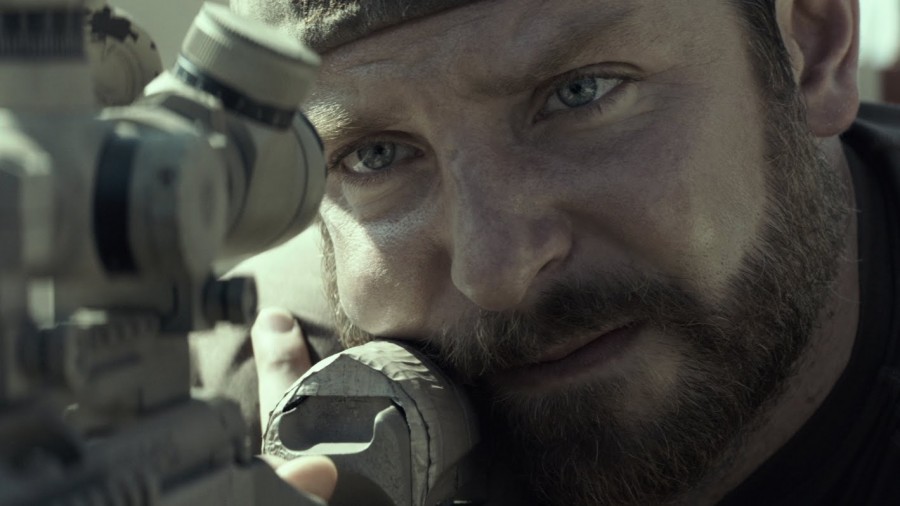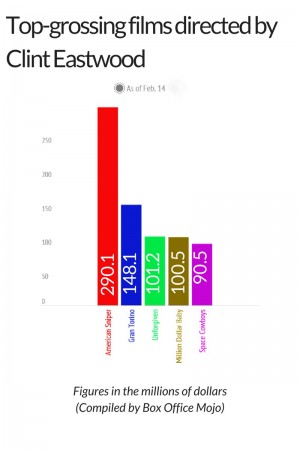Eastwood’s latest brings horrors of war to life
Bradley Cooper earned an Oscar nomination for his portrayal of sniper Chris Kyle.
Director Clint Eastwood’s American Sniper is the war movie that Hollywood has been waiting for. It offers moviegoers a deep look into the horrors of the decade-long war in Iraq and some of its fiercest battlegrounds.
That look is filtered through the eyes of an all-American young man who goes from bronco buster to Navy SEAL, drawn into the Middle East quagmire through patriotic zeal; he yearns to make a difference.
The film opens with that young man, Chris Kyle (Bradley Cooper), on an Iraqi rooftop looking down on the streets of Fallujah through the scope of his sniper’s rifle. Eastwood then whisks us back to the past, with Chris hunting in the woods with his father.
Eastwood deftly illustrates for the audience how Chris grows up into a man. His days as rodeo rider across Texas end one night while watching television—he sees news of the 1998 bombings of U.S. embassies in Tanzania and Kenya and decides to enlist.
The film does a good job of providing the back story for this almost-too-good-to-be-true symbol of American life and values as he turns into an elite warrior. The fact that Chris has started a young family puts his multiple tours of duty in Iraq into stark perspective.

Director Clint Eastwood on set with Bradley Cooper.
Eastwood, showing no signs of slowing down at age 84, makes every scene look real and gritty, showing blood, dirt, and sand. All the action scenes are as intense as they are gripping and realistic.
Eastwood’s camera does not flinch from a filthy and terrible environment. Contrary to much public opinion and debate, the movie does not by any means glorify war. It is not portrayed as a noble endeavor, but at the same time it does not demonize the men who wage it.
War is war—and war is horrible. In that sense the movie does a wonderful job of realistically displaying what the American service members who were sent there subsequently suffered through.
The movie also shows how for many the war isn’t over when they come home. Cooper, who earned an Oscar nomination, gives a fantastic performance, bringing Chris and his struggle with post traumatic stress disorder to life.
Both Cooper and Eastwood illustrate the destructive effects this has on Chris and his family. Chris, in a way, never truly comes home and this puts an agonizing strain on his family, particularly his wife, Taya (Sienna Miller).
All of this is not to say the movie is without fault. One of the film’s biggest problems is with its pacing—the editing makes it seem as if Eastwood wanted to release a longer version but cut it down in a way that causes American Sniper to lose its timing.
Many scenes, particularly the ones that take place after Chris returns home, feel rushed, leaving a sense that too much ended up on the cutting room floor. Viewers are left, at times, feeling like they are being dragged away from a scene before they’re ready to move on.
Conversely, Chris’ actions as a sniper feel a bit repetitive at times, with him shooting one Iraqi after another in more or less the same fashion. In the film’s defense, however, there are times when this works to show the horrible monotony and routine Chris feels when he is on alert for hours on end.
Another smaller fault is a scene near the climax, in which Eastwood opts for slow motion to build suspense. The dialogue here, meant to set the audience on edge, falls flat, while the CGI effects feel unfinished and even a little cheap.
This is really unfortunate since the slow motion forces the audience to take in every detail.
Despite these missteps, the film finds a worthy place in cinema’s war canon. Cooper and Eastwood are at the top of their games and they bring the many faces of war and its aftermath to the screen in tactful, emotional ways.
Eastwood’s most successful film at the box office to date is nominated for six Academy Awards, and it will be interesting to see what it takes away during the ceremony on Feb. 22.





